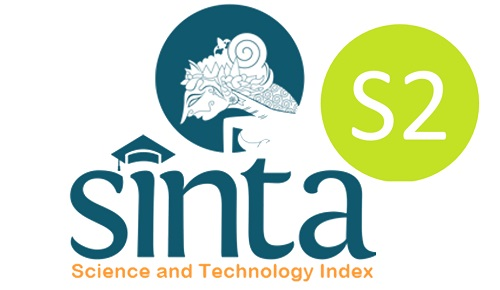Scrutinizing EFL students' plagiarism practice
DOI:
https://doi.org/10.22373/ej.v9i1.10492Keywords:
EFL students, plagiarism practice, plagiarism checker.Abstract
The current study was designed to investigate the types of plagiarism that appear in EFL students’ theses at Ar-Raniry State Islamic University, Indonesia. It sought to examine the plagiarism level, and investigate the triggering factors encouraging these EFL students of the 2019 batch to plagiarize. This study used a qualitative method with a case study approach. The participants in this study were ten EFL students of the 2019 batch and their theses. The participants were randomly selected. The data collection was carried out using two research instruments, namely document analysis, and interview. The researcher analyzed the student's thesis using Plagiarism Checker X. The results of the document analysis showed that there were two types of plagiarism detected in the student's thesis, namely word for word and mosaic plagiarism. Second, the researcher found that the plagiarism level of the 2019 batch English students' thesis of UIN Ar-Raniry was at the low-level plagiarism category, which can be observed from the result of the similarity index. The level of plagiarism found in these theses was less than 30%, still at an acceptable level as stipulated by the university regulation. Meanwhile, the result of the interview showed that all participants know what plagiarism is and they think that plagiarism is a negative conduct. Several factors influences EFL English students to plagiarize, such as poor time management, laziness, poor paraphrasing skills, affordable internet access, and running out of ideas.Downloads
References
Amiri, F., & Razmjoo, S. A. (2015). On Iranian EFL undergraduate students' perceptions of plagiarism. Journal of Academic Ethics, 14, 115-131.
Bahadori, M., Izadi, M., & Hoseinpourfard, M. (2012). Plagiarism: Concepts, factors and solutions. Iranian Journal of Military Medicine, 14(3), 168-177.
Bryman, A. (2012). Social research methods. New York, NY: Oxford University.
Cheak, A. P. C., Sze, C. C., Ai, Y. J., Min, C. M., & Ming, S. J. (2013). Internet plagiarism: University students’ perspectives. In International Research Conference (pp. 26-27).
Creswell, J. W. (2012). Educational research (planning, conducting, and evaluating quantitative and qualitative research) (4th ed). Boston, MA: Pearson Education Inc.
Creswell, J. W., & Creswell, J. D. (2018). Research design: qualitative, quantitative, and mixed methods approaches (5th ed). Los Angeles, CA: SAGE Publications.
Dee, T. S., & Jacob, B. A. (2012). Rational ignorance in education: A field experiment in student plagiarism. Journal of Human Resources, 47(2), 397-434. Doi: 10.1353/jhr.2012.0012
Debnath, C, J. (2016). Plagiarism: A silent epidemic in scientific writing – Reasons, recognition and remedies. Medical Journal Armed Forces India, 72(2), 164-167. Doi: 10.1016/j.mjafi.2016.03.010
Ellis, C., Zucker, I. M., & Randall, D. (2018). The infernal business of contract cheating: understanding the business processes and models of academic custom writing sites. International Journal for Educational Integrity, 14(1), 1-21.
Gomez, M. S. S., Lakshminarayan, N., & BK, S. (2014). Assessment of the attitude towards Plagiarism among dental postgraduate students and faculty members in Bapuji Dental College and Hospital, Davangere – A cross-sectional survey. IOSR Journal of Dental and Medical Sciences, 13(5), 1-6.
Greenberger, S., Hollbeck, R., & Dyer, T. (2016). Plagiarism due to misunderstanding: Online instructor perceptions. Journal of the Scholarship of Teaching and Learning, 16(6), 72-84.
Griffee, D. T. (2012). An introduction to second language research methods: Design and data. Berkeley, CA: TESL-EJ Publications.
Habiburrahim, H. (2015). The internet and ICT: Opportunities or threats to the education world?. Englisia: Journal of Language, Education, and Humanities, 3(1), 1-8.
Leavy, P. (2017). Research design: quantitative, qualitative, mixed methods, arts-based, and community-based participatory research approaches. New York, NY: The Guilford Press.
Marjanovic, M., Tomašević, V., & Živković, D. (2015). Anti-plagiarism software: usage, effectiveness and issues. In International Scientific Conference of IT and Business-Related Research (pp. 119-122). Singidunum University.
Patra, R. (2017). Plagiarism and its effect on pediatric surgery publications. Journal of Indian Association of Pediatric Surgeons, 22(4), 199-201.
Pecorari, D., & Petric, B. (2014). Plagiarism in second-language writing. Language Teaching, 47(3), 269-302 doi:10.1017/S0261444814000056
Plagiarismcheckerx. (2020). Check Plagiarism X features. https://plagiarismcheckerx.com/features
Qu, S., & Dumay, J. (2011). The qualitative research interview. Qualitative Research in Accounting & Management, 8(3), 238-264.
Randhawa, R. K., Gupta, N., Arora, V., Nishant, & Gupta, P. (2015). Plagiarism: An academic dishonesty!. Journal of Updates in Dentistry, 4(1), 19-23.
Risquez, A., O’Dwyer, M., & Ledwith, A. (2011). Technology enhanced learning and plagiarism in entrepreneurship education. Education and Training, 53(8), 750–761. https://doi.org/10.1108/00400911111185062
Selemani, A., Chawinga, W. D., & Dube, G. (2018). Why do postgraduate students commit plagiarism? An empirical study. International Journal for Educational Integrity, 14(7), 1-15.
Yin, R. K. (2018). Case study research and applications: design and methods (6th ed). Los Angeles, LA: SAGE Publications.
Zhang, Y., & Jia, X. (2012). A survey on the use of CrossCheck for detecting plagiarism in journal articles. Learned Publishing, 25, 292–307.
Downloads
Published
Issue
Section
License
Proposed Policy for Journals That Offer Open Access
Authors who publish with Englisia journal agree to the following terms:
- Authors retain copyright and grant the journal right of first publication with the work simultaneously licensed under a Creative Commons Attribution License that allows others to share the work with an acknowledgement of the work's authorship and initial publication in this journal.
- Authors are able to enter into separate, additional contractual arrangements for the non-exclusive distribution of the journal's published version of the work (e.g., post it to an institutional repository or publish it in a book), with an acknowledgement of its initial publication in this journal.
- Authors are permitted and encouraged to post their work online (e.g., in institutional repositories or on their website) prior to and during the submission process, as it can lead to productive exchanges, as well as earlier and greater citation of published work (See The Effect of Open Access).









